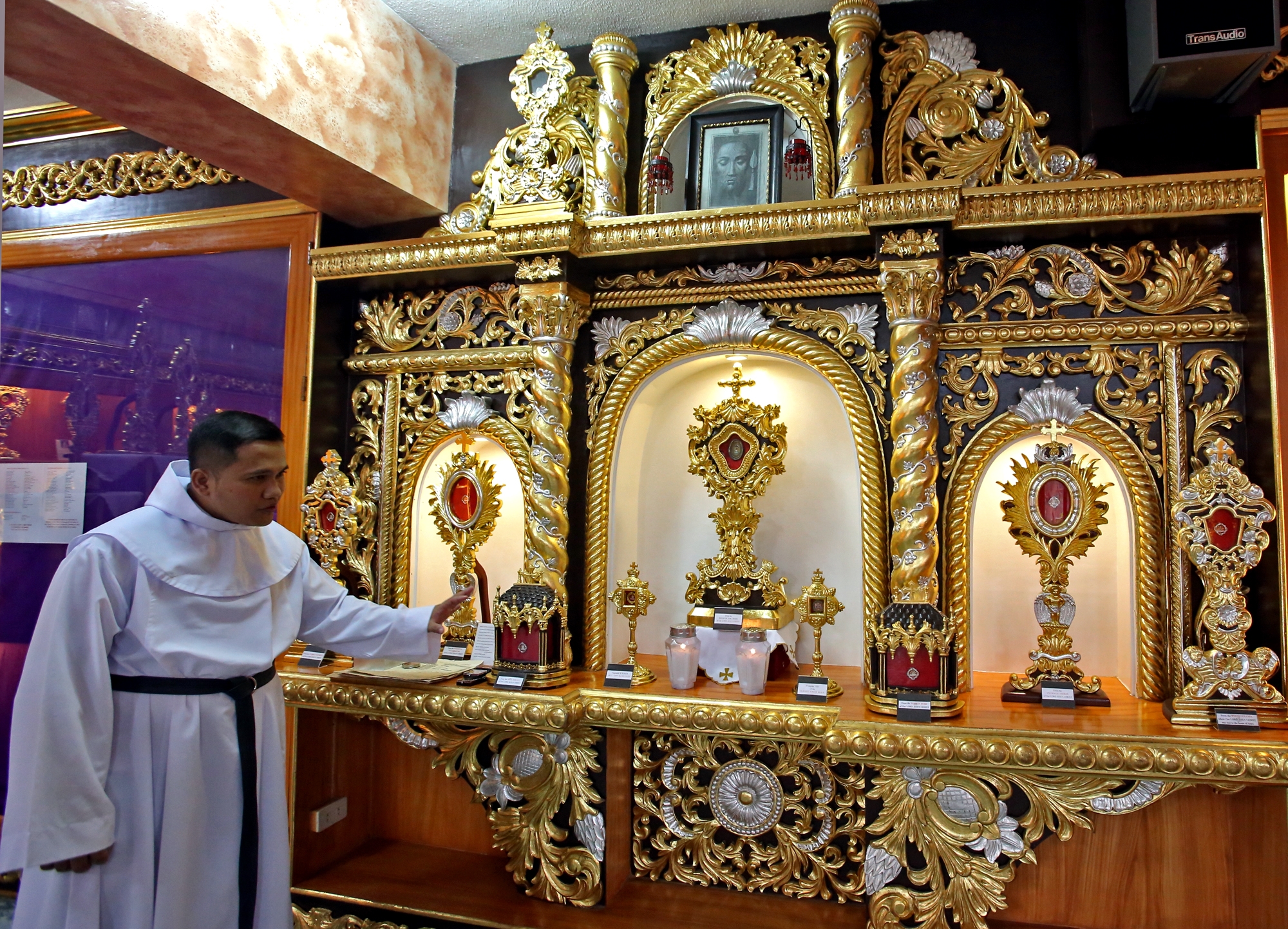Relics of Christ’s cross in Talamban

The Catholic faithful are invited to see for themselves some of the Passion Relics (below left) at the Chapel of Holy Relics at Tabor Hill in barangay San Jose, Talamban. (CDN PHOTOS/JUNJIE MENDOZA)
To an outsider, it may look like an ordinary piece of wood. But the splinter of wood being kept at the Chapel of Holy Relics in Tabor Hill in barangay Talamban in Cebu City came from the cross on which Jesus Christ was crucified.
The chapel also houses other relics commemorating His passion and death.
The chapel is under the supervision of the Order of the Discalced Augustinians (OAD) and houses three reliquaries of Jesus’ cross.
Fr. Dennis Duene Ruiz, the chapel’s chaplain and curator, said the fragments of the cross were authenticated by no less than the Vatican.
“With the relics of the passion, we can say with conviction that Jesus is not a fictional character. He is not a myth. Jesus really exists,” he said.
Entrusted
According to Church tradition, St. Helena, the mother of Constantine who became the first Christian emperor of Rome, travelled to the Holy Land in 326–28 A.D. and found three crosses near the Lord’s Sepulcher in Jerusalem.
To determine which of the three was the true cross where Jesus was nailed, a lady of rank, who had suffered from disease, was asked to touch each of the crosses.
When the lady touched the true cross, she was healed of the disease. With the cross were also found the holy nails which St. Helena took with her back to Constantinople.
Fragments of the true cross were distributed to many churches around the world.
Aside from the relics of the true cross, Ruiz was also entrusted with other relics.
These include fragments taken from Jesus’ crown of thorns, passion and purple robes, table of the Last Supper, column of the flagellation, the wood column where Jesus was tied in the house of Anna, sundarium or the funeral facial veil, holy shroud, rocks from Calvary, Gethsemane, and Mount of Olives, and the marble slab from the Holy Sepulcher.
The relics of holy persons present during Jesus’ passion were also being venerated in the chapel.
These include the veil of the Blessed Virgin Mary and fragments from the bones of St. John the Apostle, St. Salome, St. Mary of Cleophas, St. Mary Jacobi, St. Mary Magdalene, St. Nicodemus, and St. Longinus, the Roman soldier who pierced Jesus’ side with a lance but later testified that, “in truth, Jesus is son of God.”
The chapel also keeps a fragment from the cross of St. Dismas, the penitent thief crucified beside Jesus.
“These relics came to Cebu with a historical background as to where it came from and so on. These give us a direct link to holy persons in history,” said Fr. Ruiz who used to work in the Office of the Holy Relics in Rome while taking further studies in Philosophy, Theology, Cultural
Heritage, and Church History at the Pontifical Gregorian University in Rome, Italy.
Gifts
He acquired the relics of saints from several postulators, a church official who presents a plea for canonization or beatification.
Ruiz secured the others from the Lipsanoteca, a church agency that dispenses relics from offices of religious orders.
“I stayed in Rome for eight years. I spent five years assisting the Office of the Holy Relics,” Ruiz said.
The relics are administered by Fr. Ruiz with the help of the OAD in their Tabor Hill compound which has been present in the Philippines for the past 20 years.
For the moment, the Chapel of Holy Relics has over 900 relics of different saints. About 98 percent of them are first-class relics.
The Passion Relics was opened for public veneration last Friday. It will be displayed at the Chapel of Relics until Black Saturday.
“The Passion Relics are brought out for veneration once every year. We’re hoping people will visit and see for themselves what has been witnesses to Christ’s passion and death,” Fr. Ruiz said.
Disclaimer: The comments uploaded on this site do not necessarily represent or reflect the views of management and owner of Cebudailynews. We reserve the right to exclude comments that we deem to be inconsistent with our editorial standards.
